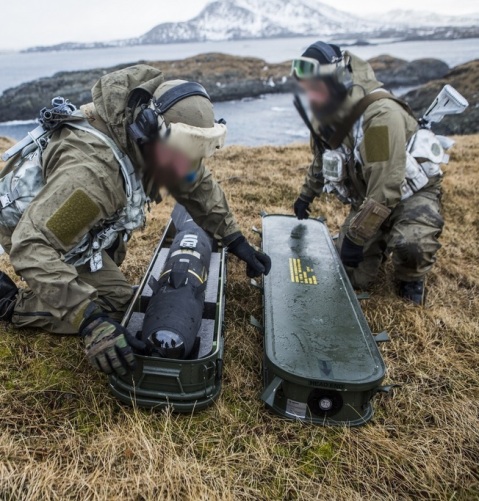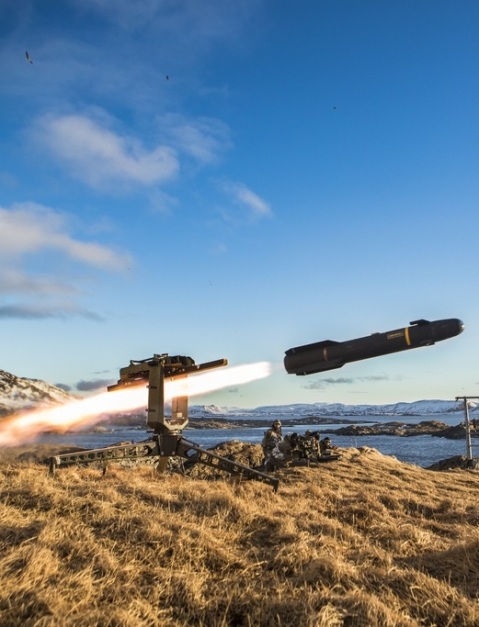Look, in the fjords, what are those guys doing?
One of the most unexpectedly versatile missile in the Western arsenal is the Hellfire missile. Originally set up to arm U.S. Army AH-1 and AH-64 helicopters in the 1970s to smother the Soviet tank armies in the Fulda Gap, the Hellfire has expanded to use in drones, C-130s, land vehicles, fighter bombers (as Brimstone) naval vessels, and coast defense.
Say what?
Yep,
With the thousands of miles of craggy coastline in Sweden and Norway, the armed services of those countries have long used a ground-strike version of Hellfire.
The Hellfire Shore Defense System (HSDS).
 Kystjegere setter opp hellfire våpen / Soldiers from the Norwegian coastal artillery preparing hellfire weapon
Kystjegere setter opp hellfire våpen / Soldiers from the Norwegian coastal artillery preparing hellfire weapon
 Kystjegere setter opp hellfire våpen / Soldiers from the Norwegian coastal artillery preparing hellfire weapon
Kystjegere setter opp hellfire våpen / Soldiers from the Norwegian coastal artillery preparing hellfire weapon
 Kystjegerkommandoen fyrer av et Hellfire-missil mot bevegelig sjømål på finnmarkskysten / Soldiers from the Norwegian coastal artillery fire a Hellfire missile towards moving targets
Kystjegerkommandoen fyrer av et Hellfire-missil mot bevegelig sjømål på finnmarkskysten / Soldiers from the Norwegian coastal artillery fire a Hellfire missile towards moving targets
It consists of consists of a pair of single rail launchers, a pair of control cables, pair of safe and arming boxes, four batteries and a control box with a designator. Each single-rail launcher is in two parts legs and rail/trunnion. Total weight is 105-pounds. An HSDS Hellfire in its floating transport container weighs 156-pounds and can be set up by a two-man crew in less than 8 minutes. Range of this system is given as 300-10,000m and for anti-shipping applications has a 9kg HE blast/ fragmentation warhead.
If you think such a small missile has no use against naval vessels, keep in mind the
Battle South Georgia in 1982 where 22 Royal Marines equipped with nothing more than small arms and 84mm and 66mm AT rockets crippled the modern Argentina corvette
Guerrico.
You can bet a hellfire could scratch the paint-job on a Russian gunboat or submarine sail.






 Näin käy kun yhdistetään sananvapaus, idiootti ja Wikipedia.
Näin käy kun yhdistetään sananvapaus, idiootti ja Wikipedia.

